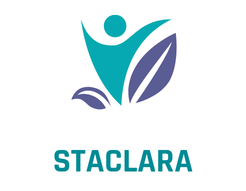Phosphate control in dialysis patients is essential for preventing bone disorders. UK nephrologists must adopt effective strategies to manage phosphate levels rigorously. This article explores innovative approaches tailored to the complexities of renal care, emphasizing practical interventions and the latest research findings. By understanding the nuances of phosphate metabolism, nephrologists can enhance patient outcomes significantly, improving both quality of life and treatment efficacy. Discover how optimizing phosphate management transforms patient care and mitigates the risks of bone-related complications.
Evidence-Based Guidelines for Phosphate Management
Effective strategies for dialysis patients
Also to read : Exploring Innovative Strategies by UK Pain Experts to Tackle Neuropathic Pain Without Opioids
Overview of Clinical Guidelines
Phosphate control is crucial in dialysis management, as elevated phosphate levels can lead to complications. Current clinical guidelines emphasize the need for tailored approaches. According to nephrology guidelines, treatment plans should be individualized to meet specific patient requirements. This customization ensures that interventions are both effective and safe, minimizing adverse effects.
Importance of Individualized Treatment Plans
Developing a personalized treatment plan involves assessing various factors, such as dietary intake, residual kidney function, and the use of phosphate binders. Phosphate control strategies may include dietary restrictions, dialysis adjustments, and medication. By focusing on the unique needs of each patient, healthcare providers can optimize outcomes and enhance quality of life.
Additional reading : Empowering UK Veterinarians: Integrating Holistic Approaches for Effective Chronic Pet Condition Management
Role of Interdisciplinary Teams
Implementing nephrology guidelines requires collaboration among healthcare professionals. Interdisciplinary teams, comprising nephrologists, dietitians, nurses, and social workers, play a vital role in dialysis management. They work together to ensure that phosphate control measures are effectively communicated and adhered to, providing comprehensive support to patients.
- Key Elements of Phosphate Management:
- Regular monitoring of phosphate levels
- Use of phosphate binders
- Dietary modifications
By adhering to evidence-based guidelines and fostering teamwork, healthcare providers can significantly improve phosphate management in dialysis patients.
Dietary Management Strategies
Strategies for effective phosphate control through diet
Recommended Dietary Approaches
Managing phosphate intake is vital for dialysis patients, and dietary interventions are a cornerstone of this process. Patients are encouraged to adopt nutritional guidelines that emphasize low-phosphate foods. These dietary changes can significantly reduce phosphate levels, aiding in overall health management. Foods such as processed meats, dairy products, and certain nuts are often high in phosphate and should be consumed sparingly.
Importance of Patient Education
Educating patients about phosphate-rich foods is crucial. Understanding which foods to avoid or limit can empower patients to make informed decisions about their diet. This education is often delivered through personalized sessions with dietitians, ensuring that patients grasp the importance of adhering to their phosphate diet.
Case Studies of Successful Interventions
Case studies highlight the success of dietary interventions in managing phosphate levels. One example involved a patient who, after attending educational workshops, successfully reduced their phosphate levels by 30% through dietary changes alone. Such outcomes underscore the effectiveness of tailored nutritional guidelines in achieving desired health outcomes.
- Key Dietary Tips:
- Limit dairy and processed foods
- Opt for fresh fruits and vegetables
- Regularly consult with dietitians
Implementing these strategies can lead to substantial improvements in managing phosphate intake for dialysis patients.
Phosphate Binders: Best Practices
Solutions for effective medication management
Overview of Phosphate Binders
Phosphate binders are essential in managing elevated phosphate levels in dialysis patients. These medications work by binding dietary phosphate in the gastrointestinal tract, preventing its absorption into the bloodstream. Several types of phosphate binders are available, including calcium-based, non-calcium-based, and aluminum-based options. Each type offers distinct benefits and potential drawbacks, which must be carefully considered.
Considerations for Selecting Appropriate Binders
Choosing the right phosphate binder involves evaluating patient-specific factors such as calcium levels, existing comorbidities, and dietary habits. Healthcare providers should tailor treatment options to align with individual patient needs. For instance, non-calcium-based binders may be preferred for patients with hypercalcemia, while calcium-based binders might suit those needing additional calcium intake.
Monitoring Effectiveness and Potential Side Effects
Regular monitoring is crucial to ensure the effectiveness of phosphate binders and to identify any potential side effects. Common side effects can include gastrointestinal discomfort and alterations in mineral balance. Consistent follow-up appointments allow healthcare providers to adjust treatment options as necessary, optimizing patient outcomes.
- Key Considerations:
- Patient-specific factors
- Regular monitoring
- Side effect management
By prioritizing personalized medication management, healthcare teams can effectively utilize phosphate binders to improve patient health.
Monitoring Protocols and Tools
Ensuring optimal patient health through effective tracking
Recommended Frequency and Methods
Regular patient monitoring is crucial for maintaining balanced phosphate levels. Experts suggest monitoring phosphate levels at least once a month for dialysis patients. This frequency allows for timely adjustments in treatment plans. Utilizing clinical tools such as blood tests and digital health platforms can enhance monitoring efficiency. These methods ensure accurate data collection and facilitate informed decision-making.
Use of Technology and Tools
Advancements in technology have revolutionized how healthcare providers monitor phosphate levels. Tools like wearable devices and mobile health apps provide real-time data, offering insights into patients' daily phosphate intake and excretion patterns. Such tools empower patients to actively participate in their health management. Incorporating these technologies into standard monitoring protocols can lead to more precise and individualized care.
Case Studies Demonstrating Successful Practices
Real-world examples highlight the benefits of comprehensive patient monitoring. In one case study, a dialysis center implemented a digital tracking system that reduced phosphate level fluctuations by 25%. This success was attributed to the system's ability to provide continuous feedback and enable proactive adjustments to treatment plans.
- Key Monitoring Tools:
- Blood tests
- Mobile health apps
- Wearable devices
By integrating these protocols and tools, healthcare teams can achieve more effective phosphate level management, ultimately enhancing patient outcomes.
Recent Research Developments and Regulatory Considerations
Exploring advancements and guidelines shaping nephrology practice
Summary of Recent Studies Impacting Phosphate Management
Recent research in phosphate management has introduced innovative approaches that promise to enhance treatment efficacy. A study published in the Journal of Nephrology highlighted a novel phosphate binder formulation that significantly reduces side effects while maintaining effectiveness. Another investigation focused on the role of genetic markers in predicting patient response to dietary interventions, offering a path toward more personalized care.
Implications of Regulatory Changes on Nephrology Practice
Regulatory bodies have updated guidelines to integrate these research findings, impacting nephrology practice. The adoption of new regulatory guidelines emphasizes the importance of individualized treatment plans and the use of technology in monitoring protocols. These changes require healthcare providers to stay informed and adapt their practices accordingly to ensure compliance and optimal patient outcomes.
Future Directions and Ongoing Research in Phosphate Control
Future research directions include exploring the long-term effects of dietary management and phosphate binder use. Ongoing studies aim to develop non-invasive monitoring tools, enhancing patient comfort and adherence.
- Key Focus Areas:
- Genetic markers in treatment response
- Non-invasive monitoring technologies
- Integration of new regulatory standards
These advancements and regulatory guidelines underscore the dynamic nature of phosphate management in nephrology, paving the way for improved patient care.











